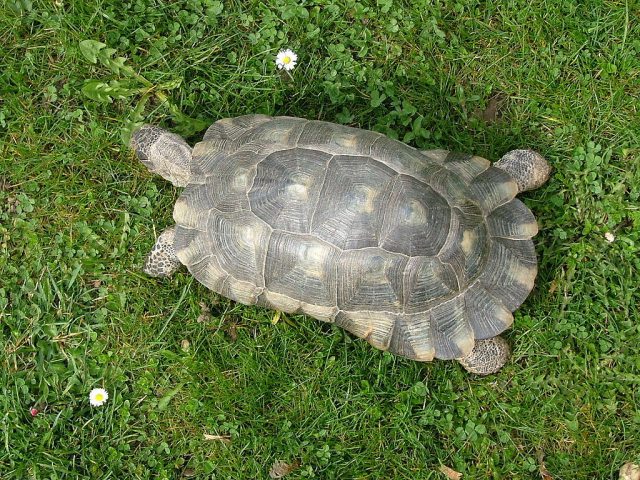Type the name of the breed you're looking for below
[wpdreams_ajaxsearchlite] Don't see the breed your're looking for? Click here and let us know!
Marginated Tortoise
| Place of Origin and Range | The Marginated tortoise is a species of tortoise found in Greece, Italy and the Balkans in southern Europe. |
| Description | Its shell is oblong and has a notable thickness around the middle of the body. The posterior end of the shell has a saw-like formation, flanged outward like a bell. The carapace of an adult specimen is almost completely black, with yellow highlights. The ventral shell is lighter-coloured and has pairs of triangular markings with the points facing the rear of the animal. The front sides of the limbs are covered with large scales. |
| Morph Patterns Available | Yes |
| Adult Size | Can grow up to 14in(35cm) |
| Accommodation | The marginated tortoise lives in more mountainous regions than Hermann's tortoise. They require large enclosures, temperatures above 60 °F (16 °C), and bedding composed of grasses or grass-based hay. Due to their high dietary fibre needs, grasses form a minimum of 75% of their food intake. Including large amounts of clean, fresh water. Minimum 2 x 4 feet for an adult. |
| Lifespan | Can live 50+ years |
| Feeding / Diet | Diet consists mainly of romaine lettuce, greens(dandelion, turnip, mustard and collard), fruit or tortoise chow. The food should occasionally be supplemented with calcium D3 and additives. |
| Breeding | Immediately after waking from hibernation, the mating instinct starts up. The males follow the females with great interest, encircling them, biting them on the limbs, ramming them, and trying to mount them. During copulation, the male opens his mouth, showing his red tongue and making loud cries. The tone of the copulation cry is almost sobbing with long, deep tones. During mating, the female stands still and holds her head to the side, looking up to see the opened mouth of the male. The red tongue apparently serves a signalling function. The female moves her head from left to right in the same rhythm as the male's cries. Afterwards, the female seeks out an adequate location to lay her eggs. The incubation period averages about 100 days under natural conditions, which is relatively short among tortoises. Many tropical tortoises have incubation periods of up to 200 days. |
| Other Considerations | Watch for theses health concerns carefully with your tortoise. Vitamin A Deficiency: Vitamin A is an important nutrient for your tortoise’s health. It is found in his diet in the form of leafy green, orange or yellow vegetables, liver, and fish. If your tortoise is not getting enough Vitamin A, he can suffer serious health problems. Always check to make sure that your tortoise does not have swollen eyelids, as this is the main sign of a Vitamin A deficiency. Also, check for weight loss, nasal discharge and infected skin. Any of these symptoms could point to a deficiency. If you think your tortoise may not be getting enough Vitamin A, you should take him to the veterinarian to get a firm diagnosis. Shell Problems: Your tortoise's shell is very important to his overall health. There are many potential problems that could occur, so you should be on the lookout at all times. Respiratory Disease: Respiratory infections have symptoms similar to vitamin A deficiency, including swollen eyelids and runny nose, so you should take your tortoise to the veterinarian to get a proper diagnosis if you suspect either. More serious infections will be characterized by breathing through the mouth, mucus in the mouth, and wheezing. Always make sure your tortoise’s environment has the proper amount of humidity, as this will help prevent respiratory problems. |



